2019.04.04.3
Files > Volume 4 > Vol 4 No 4 2019
INVESTIGATION / RESEARCH
Study on vermetid worm shells in Mon coastal area of Myanmar
Naung Naung Oo
Available from: http://dx.doi.org/10.21931/RB/2019.04.04.3
ABSTRACT
Vermetid worm shell of Thylacodes decussatus (Gmelin, 1791) belonging to genus Thylacodes Guettard, 1770 under the family Vermetidae collected at Kyaikkhami, Setse, Kawdut, Sitaw and Kabyarwa in Mon coastal area from January to December 2018. A total of 2561 individuals collected from rocky hard substrates, boulders, rock pool, and water-leveled benches of supra-tidal to lower sub-tidal levels. Regarding percentage species composition, September was maximum species composition, and April was minimum species composition. The range of mean was 47.67-28.67 (September-April), and standard deviation was 40.66-18.06 (November-February). Maximum and minimum species abundance were recorded in Kawdut coastal area (792 individuals) and Sitaw coastal area (207 individuals), respectively. Moreover, the habitats, zonal distribution and coiling patterns of worm shells in intertidal and shallow water environments of Mon coastal area were studied in brief.
Keywords: Composition, worm shells, Vermetidae, abundance, Mon coastal area.
INTRODUCTION
The vermetids are a distinct group of sessile gastropods, which have high morphological plasticity characterized by irregular shells growth, adapted to the substratum 1, 2. Coiling pattern and shells ornamentation change with the environment, such as turbidity of water and topography of the substratum 2, 3. Vermetids live in intertidal or shallow subtidal habitats in tropical and temperate waters between 44°N and 44°S 4, not only in warm and oxygenated waters 5, 6, but also under the cold upwelling conditions off northern Chile 7. On the coast of Mon State, can be found vermetid bio-constructions with other organisms, such as bivalve shells, barnacles and marine benthic algae from North to South coasts located between (Lat. 14° 55' N and 16° 35' N and Long. 97° 20' E and 97° 48' E). Extensive taxonomic and biological investigations were undertaken on Myanmar shallow water vermetids by Soe Thu 8, 9, 10. Based on literature records, Laborel 11 highlights a possible impoverishment of the reef-building vermetids in the South Atlantic and Poutiers 12 documents the habitat, biology, and fisheries of worm shells in Western Central Pacific regions. The purpose of this study is to study the occurrence of worm shells in the Mon coastal area.
MATERIALS AND METHODS
In this study, quantitative analysis was used by the quadrat (50 cm × 50 cm), which divided into a (10 cm × 10 cm) grid made of aluminum for light and durable. For each site, at least 5 transects of 25 m length are lined perpendicularly to the shore at the interval of 5 m for each site (Figure 1).
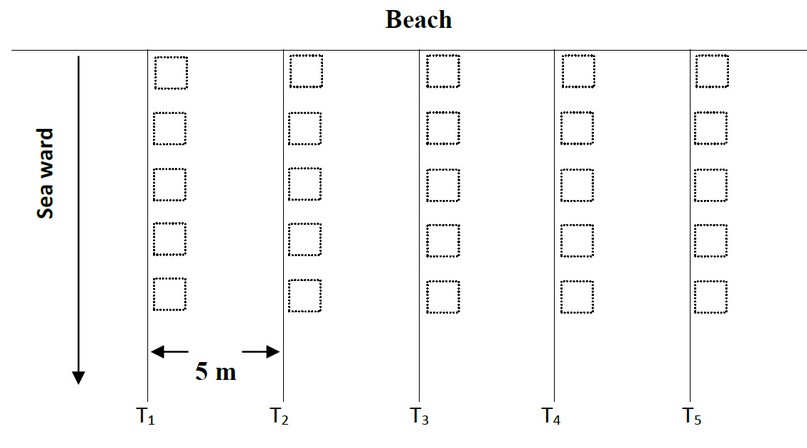
Figure 1. Systematic sampling of vermetid worm shells in Mon coastal area
Sampling was conducted monthly from January to December 2018. Drift and live specimens of vermetid worm shells living in hard and rocky substrates of intertidal and shallow subtidal areas were collected from the following coastal regions (Figure 2).
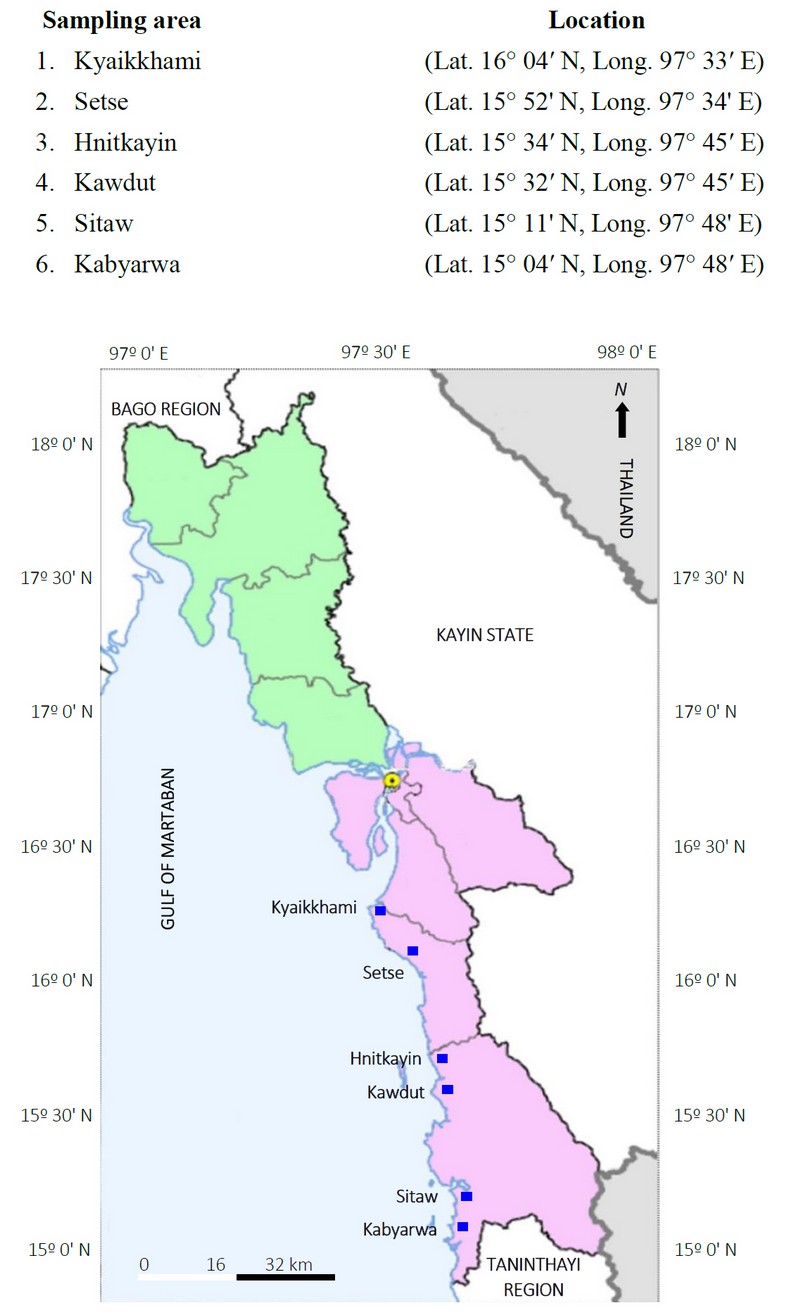
Figure 2. Map showing the study sites of vermetid worm shells in Mon coastal area
RESULTS AND DISCUSSION
The vermetid worm shells, locally called ‘Kyauk-kyoe-khway’ were conducted from 6 collection sites in central and southern Mon coastal areas. In this study, a total of 2561 individuals of worm shells were observed from different hard substrates at intertidal and shallow subtidal levels, to a depth of about 25m. This systematic account follows the identifying set out by Poutiers 12 Abbott 13 and WoRMS 14 in detailed.
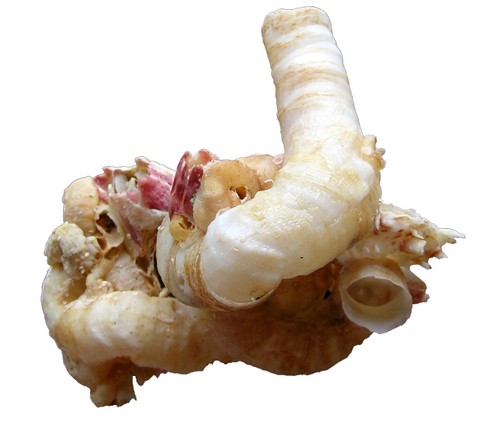
Phylum: Mollusca Linnaeus, 1758: Class: Gastropoda Cuvier, 1795; Order: Mesogastropoda Thiele, 1929; Family: Vermetidae Rafinesque, 1815 ; Genus: Thylacodes Guettard, 1770: Species: T. decussatus (Gmelin, 1791)
Family Vermetidae Rafinesque, 1815
Shell irregularly coiled or even disjunction, resembling a worm tube but composed of 3 layers. Aperture without a siphonal canal. Operculum horny, spiral, sometimes absent.
Genus Thylacodes Guettard, 1770
Shell long, usually irregularly coiled or even disjunction and resembling a worm tube, but composed of 3 layers, with the inner one porcelaneous. Shell permanently attached to a hard substrate. First, whorls coiled around an axis at a 90° angle to that of the larval shell. Sculpture weak, longitudinal or transverse, and irregular. Aperture rounded, sharp-edged, without a siphonal canal. Operculum horny, spiral, sometimes absent. Head with short tentacles bearing eyes at their outer bases. Foot small.
Thylacodes decussatus (Gmelin, 1791)
Synonyms: Serpula decussata Gmelin, 1791; Serpulorbis decussatus (Gmelin, 1791).
Shell characters: Shell large, robust, tubular, irregularly coiled, often straight or only slightly curved in the adult, partly embedded in the substrate. Sculpture variable, with weak lamellar, transverse threads. Operculum well developed, as large as the aperture, smooth and concave externally, its inner surface with a distinct, slightly thickened central scar for attachment to the foot.
Colour: Outside of shell whitish to pale brown, sometimes stained brown; interior glossy white. Operculum translucent golden brown. Head and exposed parts of the foot elegantly pigmented in bluish-black and light brown. Exposed margins of the mantle with a full bluish-black band.
Size: Maximum shell length 15 cm, commonly to 10 cm.
Habitat and fisheries: Mostly in warm-temperate or tropical, intertidal, and shallow water environments. Attached to rocks, corals, and other shells, sometimes destroying the substrate and partly or even wholly embedded in it. Some species occur in dense masses and may be significant contributors to reef-building. Worm shells are traditionally used as food by some coastal populations of the area, notably in Polynesia. Though they may be regularly collected, they generally appear in markets only rarely.
The vermetid worm shells are characteristic of intertidal areas in Mon coastal area. Thylacodes decussatus, which is highly gregarious, water-leveled benches and projecting boulders in these areas, and in tide-pools, with a mat several centimeters in thickness. Zonal distribution of vermetid worm shell in Mon coastal area as shown in table 1. The patchy community of T. decussatus occurs in the intertidal zone, their distribution robust associated with the degree of wave action. Most of the shells were found at the outer edges of intertidal benches and tide-pools and on the vertical faces of boulders, all areas where wave action is moderately severe. In Kyaikkhami coastal area, shells were distributed from mid-tide to sub-tidal zone, but the species dispersed from low tide to sub-tidal region in Hnitkayin where the rocky fringe found at low tide mark conditions. In Setse and Kabyarwa coastal areas, shells were collected from high tide mark to sub-tidal edges. The wide range of species dispersed from supra-tidal to sub-tidal in Kawdut and Sitaw coastal areas.
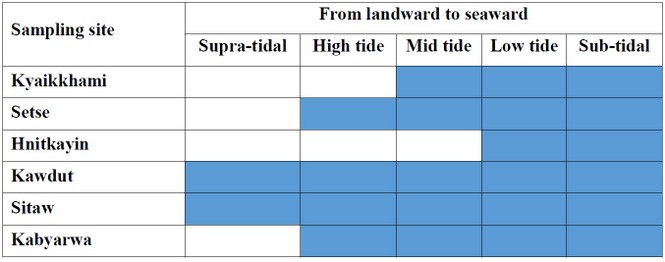
Table 1. Zonal distribution of vermetid worm shell in Mon coastal area
In the present study, a totally 2561 individuals of Thylacodes decussatus were recorded from rocky substrates of Kyaikkhami, Setse, Hnitkayin, Kawdut Sitaw, and Kabyarwa in Mon coastal area (Table 2). The maximum and minimum species composition was recorded as 286 (11.17%) in September and 172 (6.72%) in April. The mean and standard deviation were ranged 47.67-28.67 in September and April, and 40.66-18.06 in November and February. The noticeable range of percentage composition was (11.17%-6.72%). Maximum species abundance were recorded 792 individuals in Kawdut and followed by 464 individuals in Setse, 399 individuals in Kyaikkhami, 387 individuals in Hnitkayin, 312 individuals in Kabyarwa and 207 individuals in Sitaw, respectively. During the study period, monthly species composition from maximum to minimum individuals was recorded in September, November, August, December, January, June, May, March, February, October, July and April (Figure 3).
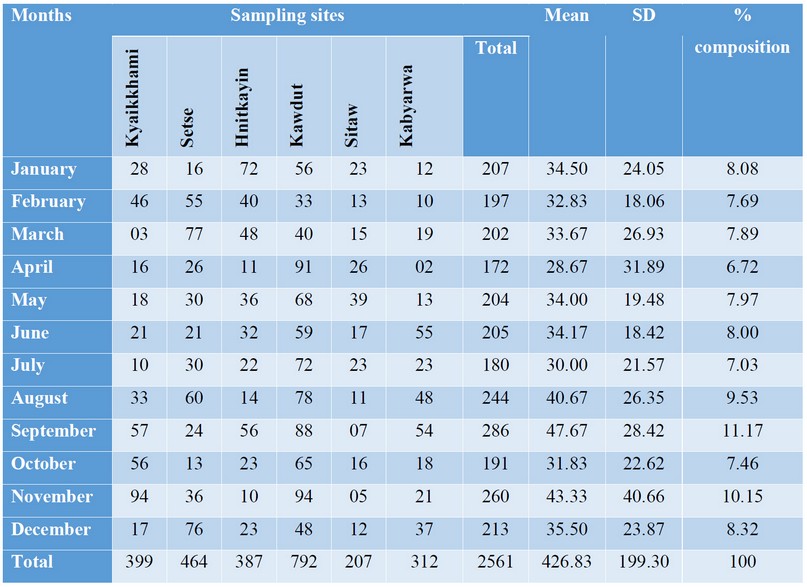
Table 2. Species composition of vermetid worm shell in Mon coastal area
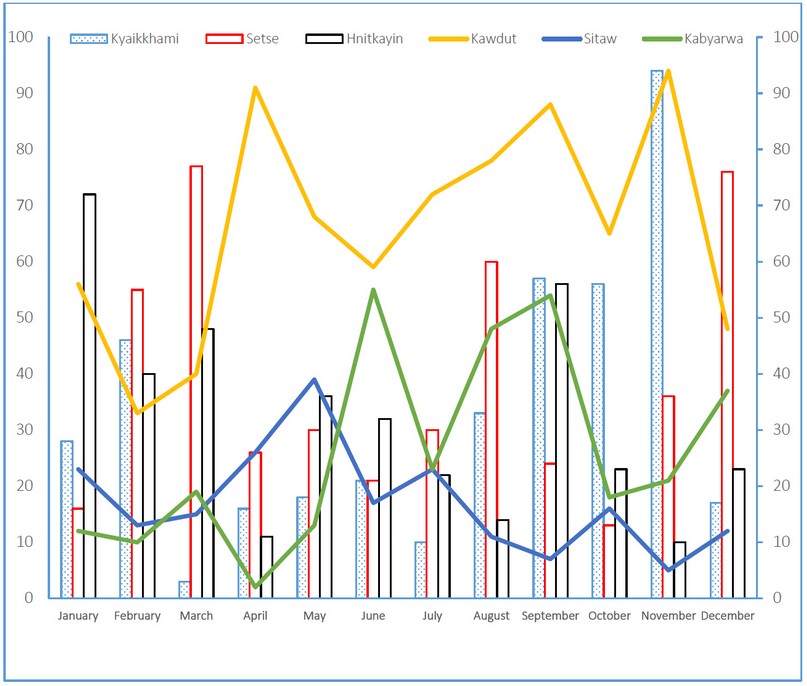
Figure 3. Monthly species composition of vermetid worm shells in Mon coastal area
Vermetidae has distinct and variable shell shape due to their settle substrate and environmental conditions 12. Shells formed irregularly coiled or even disjunction and resembling a worm tube and permanently attached to a hard substrate. Sculpture of the shell is weak, longitudinal or transverse, and irregular in shape. There are seven coiling patterns of vermetid worm shells recorded in this study. Coiling patterns of Thylacodes decussatus, as shown in table 3 comprised circular, semicircular, conical, ovate, spindle-shaped, cylindrical, and rhomboidal-shaped with 3 categories of shell length (0-5, 5-10, and 10-15). Most of the shells were semicircular coiling and ovate and circular coiling at only 0-5 cm shell length, but conical and cylindrical coiling were found at 10-15 cm shell length. Spindle and rhomboidal coiling were found at 5-10 and 10-15 cm shell length (Figure 4).
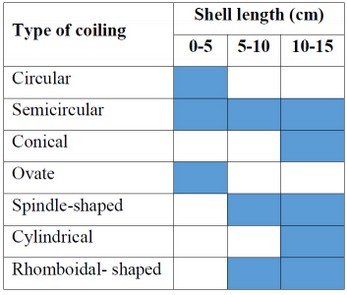
Table 3. Coiling patterns of vermetid worm shell in Mon coastal area
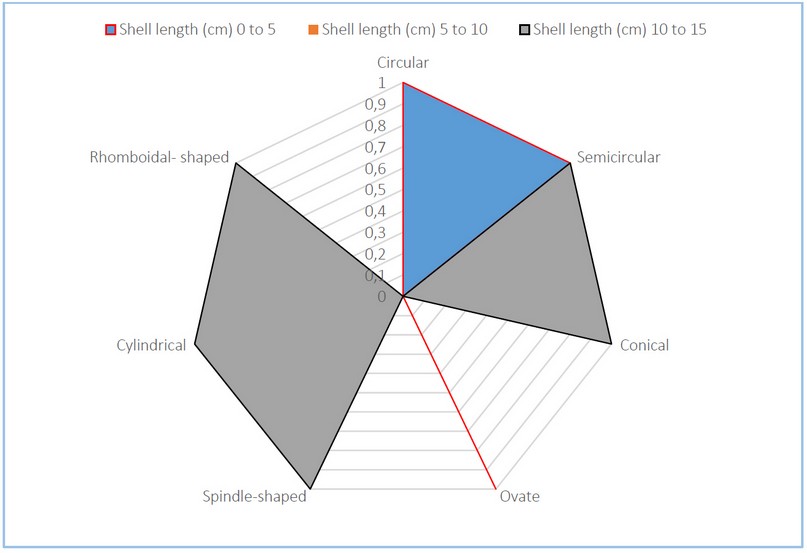
Figure 4. Types of coiling of vermetid worm shells in Mon coastal area
CONCLUSION
The vermetid worm shell Thylacodes decussatus (Gmelin, 1791) is one of the dominant gastropods in Mon coastal area. It has a high composition throughout the study period. Mean, and percentage species composition was moderately related between the study sites. The variation of shell structures showed distinct coiling patterns with their settlement substrate types. Zonal distribution can be predicted and measured the species dispersion of vermetid worm shells in study areas.
Acknowledgments
I am indebted to Dr. Aung Myat Kyaw Sein, Rector of Mawlamyine University, and Dr Mie Mie Sein and Dr San San Aye, Pro-Rectors of Mawlamyine University, for their encouragement and supports in preparing this work. I am very grateful to Dr San Tha Tun, Professor, and Head of the Department of Marine Science, Mawlamyine University, for his valuable suggestions and constructive criticisms on this study. I want to express my sincere thanks to colleagues of Field Observation Group, Department of Marine Science, Mawlamyine University, for their kindly help me in many ways during field trips. Many thanks go to Daw Lwin Lwin, Retired Lecturer of the Department of Marine Science, Mawlamyine University, for her assistance in preparations of the manuscript. I want to thank my beloved parents, U Win Maung and Daw Than Than Aye, for their physical, moral and financial support throughout this study.
REFERENCES
1. Savazzi, E. Adaptations of vermetid and siliquariid gastropods. Palaeontology. 1996. 39: 157-177.
2. Schiaparelli, S. and Cattaneo-Vietti, R. Functional morphology of vermetid feeding tubes. Lethaia. 1999. 32: 41-46.
3. Scheuwimmer, A. and Nishiwaki, S. Comparative studies on three Japanese species of Serpulorbis (Prosobranchia: Vermetidae) with description of new species. Venus. 1982. 41(2): 85-101.
4. Safriel, U.N. The role of vermetid gastropods in the formation of Mediterranean and Atlantic reefs. Oecologia. 1975. 20: 85-101.
5. Keen, A.M. A proposed reclassification of the gastropod family Vermetidae. Bulletin of the British Museum (Natural History), Zoology. 1961. 7(3): 181-213.
6. Calvo, M., Templado, J. and Penchaszadeh, P.E. Reproductive biology of the gregarious Mediterranean vermetid gastropod Dendropoma petraeum. Journal of the Marine Biological Association of the United Kingdom. 1998. 78: 525–549.
7. Pacheco, A.S., Laudien, J., Thiel, M., Yer, O.H. and Oliva, O. Hard-bottom succession of subtidal epibenthic communities colonizing hidden and exposed surfaces off northern Chile. Scientia Marina. 2010. 74(1):147-154.
8. Soe Thu. Sea shells of Ngapali. University Education Journal. 1970. 5(1): 317-368.
9. Soe Thu. Sea shells of Maungmagan. University Education Journal. 1971. 6(2): 397-432.
10. Soe Thu. Taxonomy and distribution of Burmese marine gastropods. Unpublished MSc Thesis, Department of Zoology, Art and Science University, Rangoon. 1980.
11. Laborel, J.L. Are reef-building vermetids disappearing in the south Atlantic? Proceedings, Third International Coral Reef Symposium. Miami - Florida: 1977. 233-237.
12. Poutiers, J. M. Gastropods. In: Carpenter, K. E. and Niem, V. H. (Eds.), FAO Species Identification Guide for Fishery Purposes. The Living Marine Resources of the Western Central Pacific. Volume 1. Seaweeds, Corals, Bivalves and Gastropods. Food and Agriculture Organization, Rome: 1998. 363-649.
13. Abbott, R.T. Seashells of Southeast Asia. Graham Brash, Singapore. 1991. 145 pp.
14. WoRMS. Available Source: http://www.marinespecies.org. 2019.
Received: 8 September 2019
Accepted: 2 November 2019
Naung Naung Oo
Assistant Lecturer
Department of Marine Science
Mawlamyine University
Mon State, Myanmar
. Correspondence author: [email protected]
